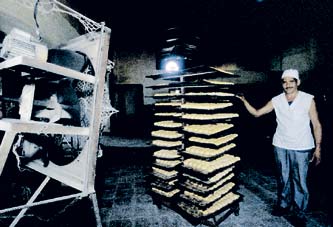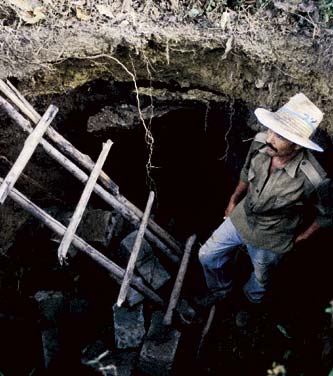Which problem does it solve?
Towards the end of the 19th century, during studies on epidemics affecting rat populations, a bacterium was isolated in Europe. This was identified as causing a lethal illness in rodents, producing a case history of abdominal typhus. Over the years, efforts were made to develop an industrial product which could exploit the effects of this micro-organism in the fight against rats and mice, but without success. At the same time, other products were developed with bacteria of the same family as the one that had been isolated, but due to the embryonic scientific knowledge of those times, the ones chosen were not specific to rats and mice, and provoked, at that time, harm and infection to other animal species.
From 1967 to 1985 studies were carried out on this agent, at first by the 'Academia de Ciencias de Cuba' and later by the 'Empresa de Laboratorios Biológico Farmacéuticos LABIOFAM', which came to a successful conclusion in 1985 with the development of Biorat. The same year, industrial production began and it was used in health campaigns conducted in Cuba.
BIORAT is a combination of three components:
- The bait is a particularly enticing mixture that induces rats and mice to consume the product. Trials were conducted on various types of grain, and it was decided to use whole rice, because it is highly palatable to these animals and can be easily obtained all over the world.
- The micro-organism in question is a specific pathogen with the following characteristics: Strain: Salmonella enteritidis; Plasmid: 59, 4, 3 MDa; Phago-type: VI; Differential biochemical characteristics: Lysine-negative. Its most distinctive characteristic is that it only affects rodents through the plasmid 59 MDa, which carries the virulence (spv) genes which are specific to rodent species. It should be pointed out that bacteria from this family causing illness in human beings and other animal species possess plasmids 30, 36 and 38, and phago-types 4, 8, 13 and 13a, none of which are present in the strain utilized in BIORAT.
- The immunosuppressive used is a substance based on cumarin, which, if used in low concentrations, weakens the pest's immune defences against attack from the bacteria contained in the product.
From the point of view of industrial property, BIORAT is registered in 21 countries and the technological process is patented internationally. It has been endorsed by the "Pedro Kourí" Institute of Tropical Medicine, which works closely with the World Health Organisation. A complete record of the clinical, laboratory and field tests conducted on this product is available.
Biological control of rat and mice colonies through Biorat has the following advantages:
- Rats and mice die after only one application.
- It is effective in all cases, including ones where colonies are resistant to anticoagulants
- Rats do not hesitate to take the bait
- It does not affect man or domestic animals, and no antidote is necessary if ingested accidentally
- It is more than palatable to rats and mice, which do not need to go in search of water since the BIORAT bait provides it for them
- It produces a deadly epizootic among rodents, affecting those that have not consumed it
- It is biodegradable, and does not contaminate the environment
- It does not create resistance nor rejection among rat and mice populations
- Rats and mice prefer it to other foods where alternatives are available
- Two applications a year are enough to keep the pests under control

At present, plagues of rats produce serious harm to both health and the economy all over the world. From the health point of view, rats are linked to the propagation of more than 60 different illnesses. In material terms, they account for losses amounting to more than 2,000 million US dollars, or the equivalent of about 4% of world production.
DOWNLOAD THE BROCHURE PDF
english (1.2 MB)albanian (1.0 MB)
spanish (1.2 MB)
serbian (1.2 MB)








 COUNTRY OF ORIGIN
COUNTRY OF ORIGIN